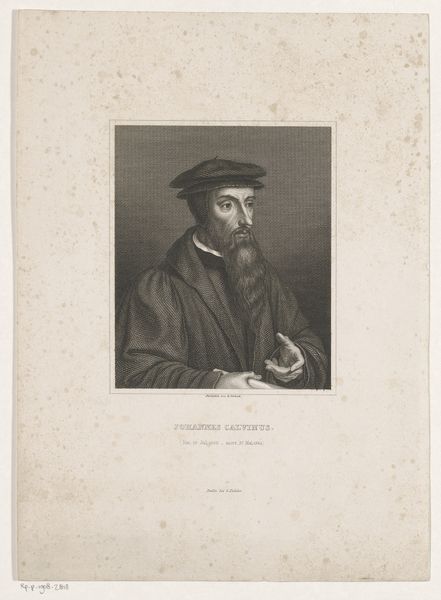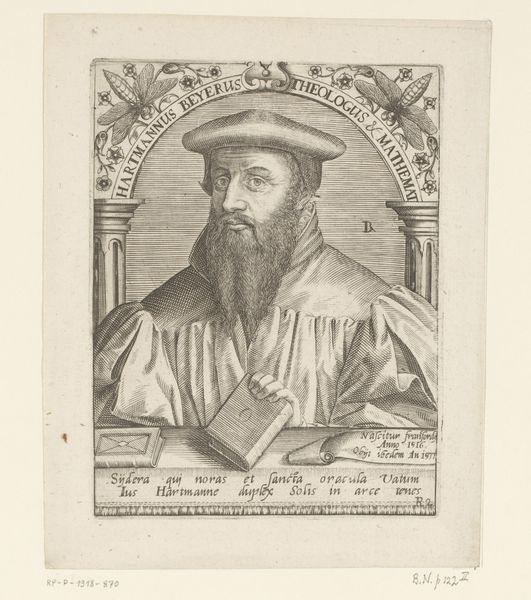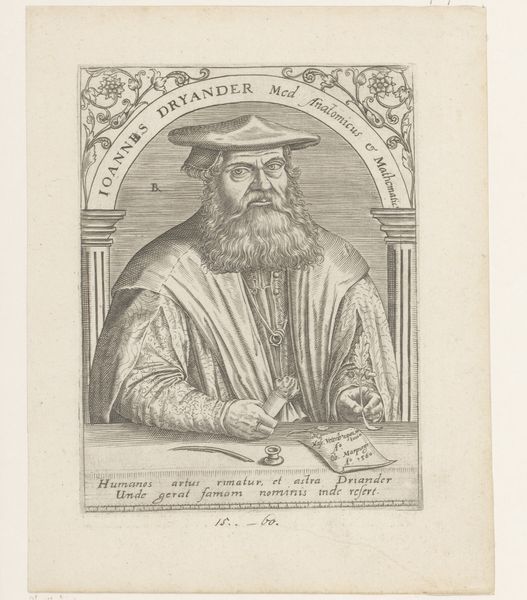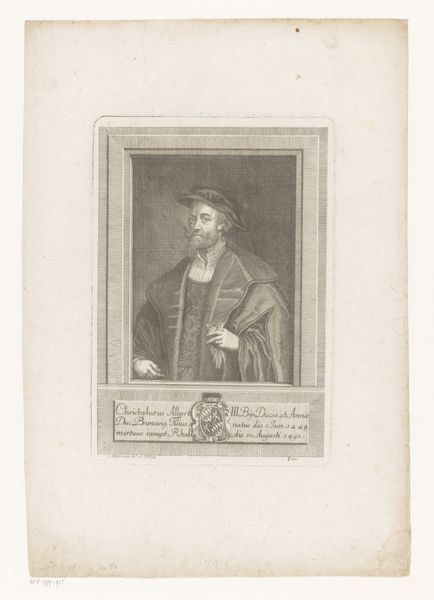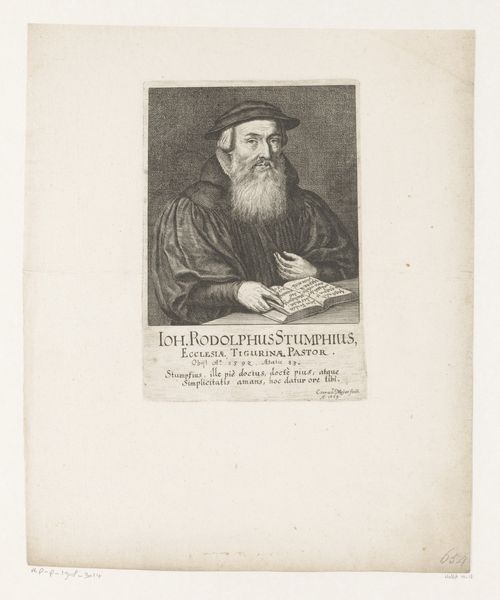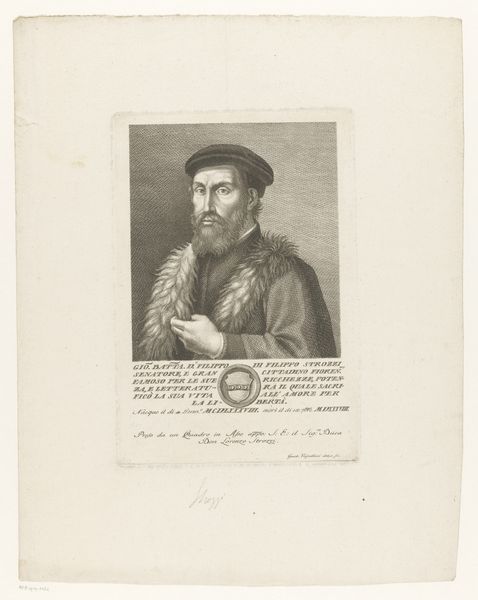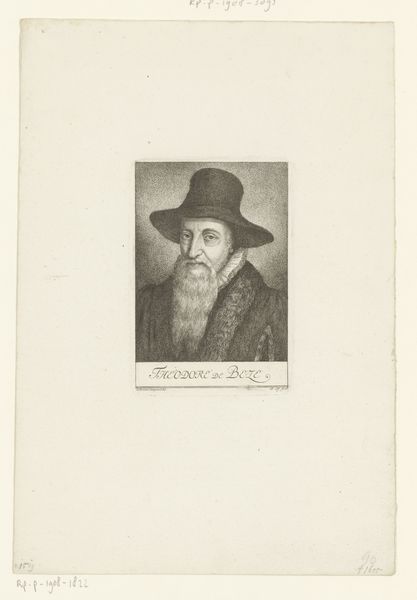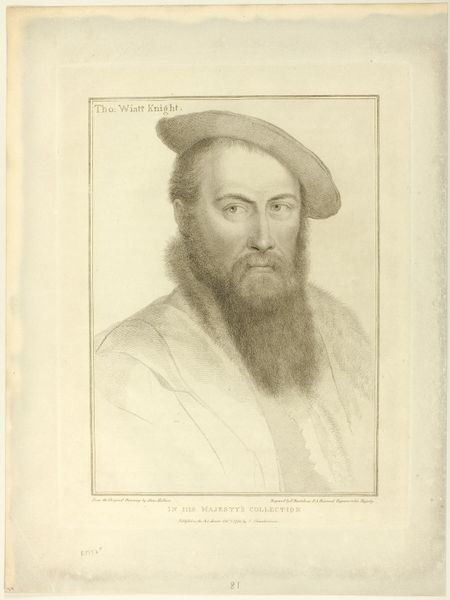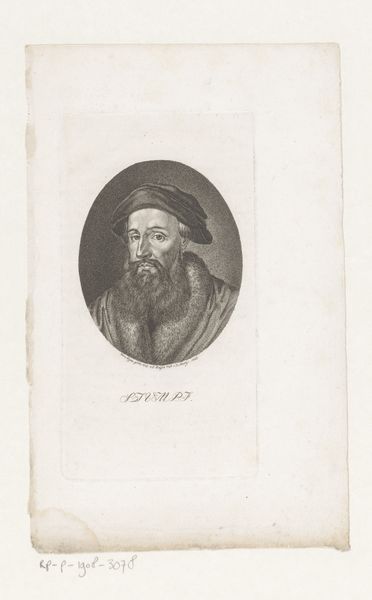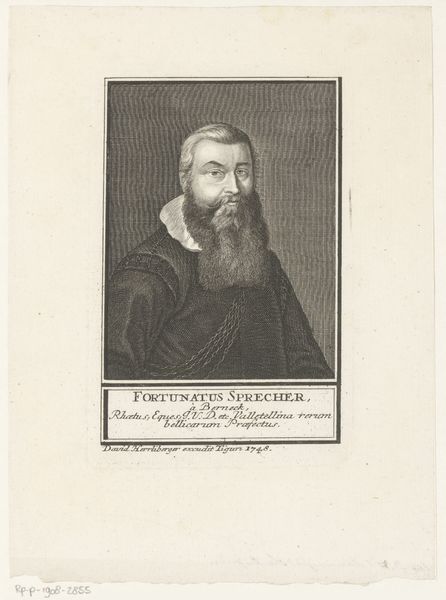
print, engraving
#
portrait
# print
#
old engraving style
#
history-painting
#
engraving
#
realism
Dimensions: height 252 mm, width 178 mm
Copyright: Rijks Museum: Open Domain
Curator: Immediately, I'm struck by the density of detail, it’s somber yet captivating. Editor: Indeed. We’re looking at a print, specifically an engraving dating between 1831 and 1882, titled "Portret van Hartmann Beyer." It's by Angilbert Göbel. Curator: Göbel's engraving has a weighty feel, both literally, suggesting an old engraving style, and metaphorically through its subject. Notice how the shading gives shape and dimension to his face and garments. The globe in the background symbolizes learning and influence, contributing to the mood of serious intellect. Editor: Beyond pure aesthetic assessment, it's important to note that portraits like these served very particular functions in 19th-century society. This wasn’t just about representing someone, but about codifying and transmitting specific social ideals. Consider who commissioned and displayed such portraits. Curator: Exactly, portraits served to solidify power and status within the socio-political elite. Hartmann Beyer, judging by his scholarly attire and surrounded by scholarly accoutrements, clearly wanted to project authority through intellect. Editor: I’d also call attention to the way Göbel used line to construct form. There’s a precision and clarity that really elevates the piece. It reflects formal realism prevalent at that time, mirroring scientific objectivity. The linear style offers a sharp definition. Curator: Yes, this print embodies both meticulous artistry and represents social ideals. The interplay of individual expression within a specific historical context makes for a work which has layers. Editor: Precisely, and viewing it allows us to witness not just skillful engraving, but the subtle interplay of image and power. Curator: It leaves you wondering what role the person in the image played in that time. Editor: Indeed, a thought-provoking piece.
Comments
No comments
Be the first to comment and join the conversation on the ultimate creative platform.
